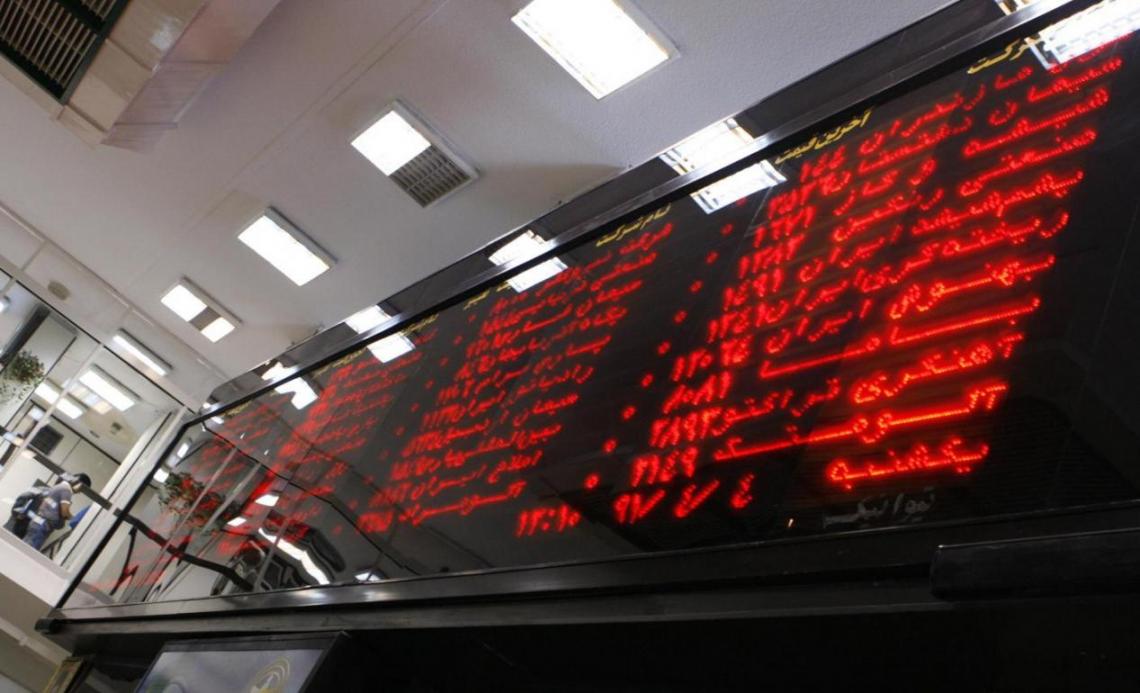Iranian stocks retreated on Tuesday after a small uptick on Monday, as the correction in equity markets continued despite talks between Saudi Arabia and Russia to cut crude output for sending oil higher.
Equities have been rallying in Tehran since Jan. 16, when sanctions against Tehran’s nuclear program were revoked, opening the way for normalization of business and banking relations with the world, foreign investment and a marked increase in Iran’s crude oil output.
The 20% leap by Tehran Stock Exchange since the date contrasts with gloom in stock markets around the world and hints at Iran’s investment potential, as its economy, long isolated by sanctions, rejoins the global trading system.
However, a price correction started last Wednesday, which deflated the market 1.3% by Tuesday’s close.
Gold, Black and Yellow
The negative sentiment in stock markets prevailed even with oil rebounding and gold retreating due to global developments.
Brent crude advanced above $34 a barrel, as Saudi Arabia held talks with Russia in Doha on Tuesday to discuss the market.
The rise had an inverse effect on petroleum stocks in TSE and Iran Fara Bourse over-the-counter market in Tehran.
Futures climbed as much as 4.3% in London, rising for a third day. The increase boosted shares of Asian energy companies, which led gains in equities across the region, Bloomberg reported.
Iran, which was the second-biggest producer in the Organization of Petroleum Exporting Countries before sanctions were intensified in 2012, is seeking to boost output by 1 million barrels a day and regain market share after penalties were lifted.
The nation has loaded its first cargo to Europe, while Chinese and Spanish companies have also booked shipments.
On the other hand, gold fell for a third day as a recovery in global equities markets diminished the appeal of the metal as a haven and Goldman Sachs Group Inc. said the rally to a one-year high last week was not justified.
Bullion for immediate delivery slid as much as 1.5% to $1,191.02 an ounce and traded at $1,196.57 at 3:59 p.m. in Singapore, according to Bloomberg generic pricing. The metal surged to $1,263.48 on Feb. 11, the highest level since February 2015.
This is while shares of producers Newcrest Mining Ltd. and Zijin Mining Group Co. retreated.
Gold has pared its advance this year to 13% amid a rebound in Asian stocks, which is increasing risk appetite among investors after a flight to haven assets this year.
Bullion markets may take comfort from European Central Bank President Mario Draghi’s comments on Monday on his willingness to act, should financial turmoil threaten price stability. Goldman Sachs recommended shorting the metal.
Tehran’s gold market has shadowed gold’s decline in the past three days, though benchmark Azadi gold coin rebounded from losses on Tuesday. Azadi rose 0.31% to 9,770,000 rials by 1300 GMT on Tuesday. It was changing hand at over 10,000,000 rials last week.
Gold coin prices usually have an inverse correlation with Iranian equities, though the relation rarely holds when contradictory news circulates in the markets.
TSE and IFB
Tehran Stock Exchange’s benchmark slipped 0.3% to 77,141.60 points on Tuesday, as National Iranian Copper Industries Company, Bank Mellat and Telecommunications Company of Iran dragged it down. Trade volume remained at record highs with nearly two billion shares changing ownership.
Iran’s largest copper producer NICICO tumbled 4.32% and closed at 1,530 rials per share. This was despite Comex copper futures gaining 1.58% to 206.10 per pound on Tuesday for May delivery.
NICICO was the sorest loser but Iran’s largest private lender also fell considerably. Mellat’s shares lost 3.65% and closed at 2,220 rials increasing drag on the index.
TCI, Iran’s main telecom provider, was another major laggard on TSE. The telecom company has been trying and failing to break above the 3,000-rial mark for the past four days. It lost 2.44% and closed at 2,960 rials per share for the day.
The IFB latched onto its gains by only edging down 0.08% to 809.98 points on Tuesday. Tehran and Shiraz Refineries, along with Zagross Petrochemical Company, were the main losers on IFB, nullifying gains by other companies in the market.
Tehran Oil Refinery Company lost over 4% and closed at 4,932 rials per share while the smaller Shiraz Refinery dipped 5% to 6,745 rials a share. Zagross’s gains were mild compared to the two refiners. The petrochemical producer declined 1.15% to 11,550 rials per share.
The Iranian economy is still struggling, as growth is close to zero, one in 10 is jobless and many banks face mountains of bad debt. But many investors are betting that by restoring Iran’s links with the rest of the world and attracting foreign capital and technology, the end of sanctions will trigger a long-term economic boom.
“The market is trading at 7-7.5 times this year’s projected corporate earnings—above its long-term average of six times, but well below 11 times for the world’s frontier markets,” Ramin Rabi, chief executive of Iranian investment group Turquoise Partners, which manages most foreign portfolio investment on TSE told Reuters.
With Iran now part of the global economy, valuations may come closer to international levels.


